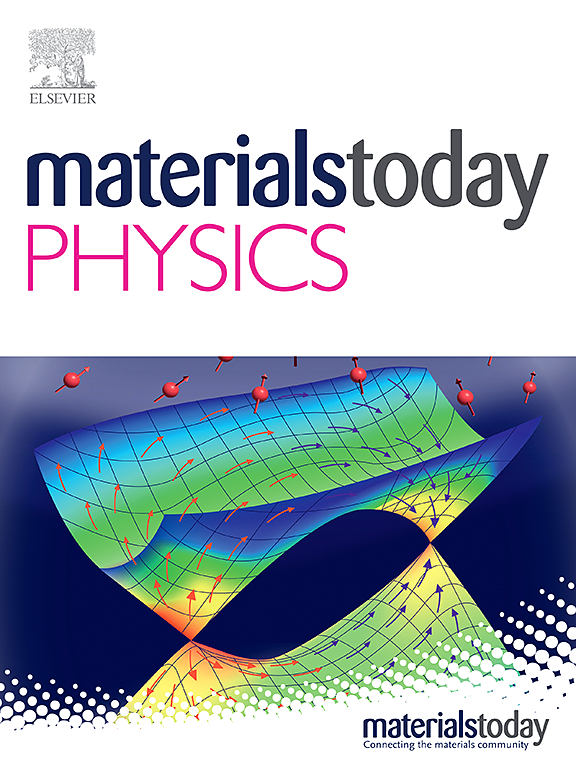Unexpected room-temperature anomalous Hall effect and spin Hall magnetoresistance in Cr0.08Co0.92Cl2/Pt heterostructures
IF 10
2区 材料科学
Q1 MATERIALS SCIENCE, MULTIDISCIPLINARY
引用次数: 0
Abstract
Recent discovery of peelable van der Waals (vdW) magnets has opened new avenues for the advancement of atomic-level spintronic devices; however, their magnetic transition temperatures are typically well below room temperature. In spite of considerable explorations, including defect engineering, strain engineering, elemental doping, and the magnetic proximity effect (MPE), controllable fabrication of room-temperature vdW spintronic devices remains a great challenge. Herein, we report the growth of layered vdW Cr0.08Co0.92Cl2 crystals, which exhibit antiferromagnetic ordering at approximately 23.4 K. Particularly, unexpected anomalous Hall effect (AHE) and spin Hall magnetoresistance (SMR) are observed in the 2D Cr0.08Co0.92Cl2/Pt heterostructure at a much higher temperature of 300 K. These distinctive room-temperature magnetic signals are attributed to the MPE at the Cr0.08Co0.92Cl2/Pt interface, which also result in a large spin Hall angle of 0.139. This study not only expands the transition metal dihalide family as 2D magnets, but also demonstrates room-temperature spintronic devices utilizing vdW magnets with otherwise low transition temperatures, paving a pathway for spintronic applications of 2D magnets.
Cr0.08Co0.92Cl2/Pt异质结构中意想不到的室温异常霍尔效应和自旋霍尔磁阻
最近发现的可剥离范德华(vdW)磁体为原子级自旋电子器件的发展开辟了新的途径;然而,它们的磁转变温度通常远低于室温。尽管在缺陷工程、应变工程、元素掺杂和磁邻近效应(MPE)等方面进行了大量的探索,但室温vdW自旋电子器件的可控制造仍然是一个巨大的挑战。本文报道了层状vdW Cr0.08Co0.92Cl2晶体的生长,该晶体在23.4 K左右表现出反铁磁有序。特别是在300 K的高温下,在二维Cr0.08Co0.92Cl2/Pt异质结构中观察到意想不到的异常霍尔效应(AHE)和自旋霍尔磁阻(SMR)。这些独特的室温磁信号归因于Cr0.08Co0.92Cl2/Pt界面处的MPE,这也导致了0.139的大自旋霍尔角。本研究不仅扩展了过渡金属二卤化物家族作为二维磁体,而且展示了利用低转变温度的vdW磁体的室温自旋电子器件,为二维磁体的自旋电子应用铺平了道路。
本文章由计算机程序翻译,如有差异,请以英文原文为准。
求助全文
约1分钟内获得全文
求助全文
来源期刊

Materials Today Physics
Materials Science-General Materials Science
CiteScore
14.00
自引率
7.80%
发文量
284
审稿时长
15 days
期刊介绍:
Materials Today Physics is a multi-disciplinary journal focused on the physics of materials, encompassing both the physical properties and materials synthesis. Operating at the interface of physics and materials science, this journal covers one of the largest and most dynamic fields within physical science. The forefront research in materials physics is driving advancements in new materials, uncovering new physics, and fostering novel applications at an unprecedented pace.
 求助内容:
求助内容: 应助结果提醒方式:
应助结果提醒方式:


